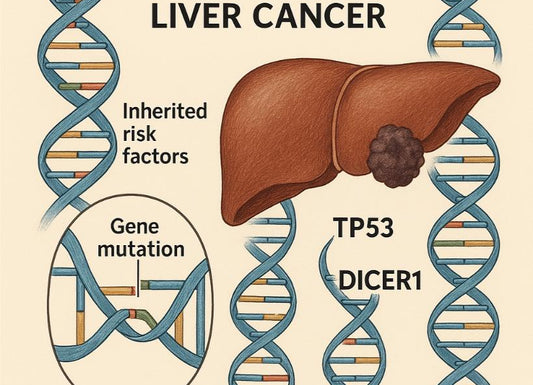Normal blood sugar levels for seniors: Safe ranges and tips for ages 70
 Written By
Blen Shumiye, MD
Written By
Blen Shumiye, MD

Are you wondering what blood sugar levels are safe as you get older? For people in their 70s and beyond, the targets are slightly higher than for younger adults. This is because your main goal isn’t “perfect” control — it’s staying safe, energized, and independent.
In this guide, you’ll learn the normal blood sugar ranges for seniors, why they differ from younger adults, and simple strategies to keep your glucose in a healthy, safe range.
Why do blood sugar levels matter after age 70?
As you age, your body processes glucose differently. Insulin sensitivity often decreases, and conditions like heart disease or kidney issues can make glucose regulation harder.
Keeping your blood sugar in a safe range helps you:
-
Avoid fatigue and confusion
-
Reduce the risk of falls
-
Lower the chance of infections or heart problems
-
Stay active and independent longer
What are normal blood sugar levels for seniors?
For people over 70, slightly higher ranges are considered safe. This helps prevent low blood sugar (hypoglycemia), which can be more dangerous than slightly higher levels.
Typical targets for older adults
-
Fasting (before meals): 100–140 mg/dL (5.6–7.8 mmol/L)
-
Two hours after meals: Less than 180 mg/dL (10.0 mmol/L)
-
Bedtime: 110–200 mg/dL (6.1–11.1 mmol/L)
-
A1C (3-month average): 7–8% (up to 8.5% for people with complex health needs)
These ranges prioritize safety while protecting long-term health.
For more details on safe ranges, see our understanding fasting glucose levels guide.
Chart: Blood Sugar Goals by Health Status
This chart offers guidance for adults aged 70 and up. These numbers may vary slightly by provider.
|
Health Status |
A1C Target |
Fasting Glucose |
Bedtime Glucose |
|
Healthy, few other conditions |
<7.5% |
80–130 mg/dL |
100–140 mg/dL |
|
Several chronic illnesses or limits |
<8.0% |
90–150 mg/dL |
100–180 mg/dL |
|
Poor health or advanced illness |
Individualized |
100–180 mg/dL |
110–200 mg/dL |
How do blood sugar targets differ for older adults?
For younger adults, the goal is strict glucose control. For seniors, the priority is safety and quality of life.
-
Hypoglycemia risks: Low blood sugar may cause shakiness, dizziness, or confusion, increasing fall risk.
-
Other health conditions: Heart or kidney disease may make strict targets unsafe.
-
Medications: Drugs like insulin or sulfonylureas (e.g., glipizide) can lower blood sugar too much if doses aren’t adjusted. For guidance, see When Is the Best Time to Take Insulin for Type 2 Diabetes?
If you have more complex health needs, your doctor may suggest a higher A1C target (8–8.5%) to focus on comfort and safety.
See our guide on when to take insulin.
What factors affect blood sugar in your 70s?
-
Diet: Skipping meals or eating high-carb foods can cause swings.
-
Exercise: Gentle movement improves insulin sensitivity, but overexertion without food may lower sugar.
-
Medications: Steroids like prednisone can raise glucose, while insulin can lower it.
-
Organ function: Aging kidneys or liver may process glucose differently.
-
Stress or illness: Even minor infections can temporarily raise blood sugar.
What symptoms of high or low blood sugar should you watch for?
Blood sugar changes can feel different as you age. Watch for these signs:
High blood sugar (hyperglycemia)
-
Frequent urination
-
Increased thirst
-
Tiredness
-
Blurred vision
-
Slow-healing wounds
Learn about glucose in urine.
Low blood sugar (hypoglycemia)
-
Shakiness
-
Sweating
-
Confusion
-
Irritability
-
Sudden dizziness
How can you monitor your blood sugar?

-
Finger-stick testing: Check in the morning, before meals, or at bedtime.
-
Continuous glucose monitors (CGMs): A skin sensor tracks levels 24/7 and helps detect overnight lows.
-
Lab tests: An A1C every 3–6 months shows your average glucose control.
Use blood sugar test kits to keep your levels in check at home.
How can you manage blood sugar safely?

1. Choose balanced meals
-
Fill half your plate with non-starchy vegetables like spinach or broccoli.
-
Add lean proteins such as fish, chicken, or beans.
-
Include whole grains and healthy fats (olive oil, nuts).
-
Avoid skipping meals to prevent sudden drops.
2. Stay active in safe ways
-
Try walking, swimming, or tai chi.
-
Add light strength training for muscle support.
-
Aim for ~150 minutes per week of moderate activity. Stop if you feel dizzy.
3. Manage medications wisely
-
Review prescriptions with your doctor, especially for heart or kidney issues.
-
Adjust doses if you experience frequent highs or lows.
4. Focus on lifestyle basics
-
Drink water or unsweetened tea to stay hydrated.
-
Sleep 7–8 hours each night.
-
Reduce stress with deep breathing or meditation.
When should you call your doctor?

Contact your healthcare provider if you notice:
-
Blood sugar repeatedly above 200 mg/dL (11.1 mmol/L) or below 70 mg/dL (3.9 mmol/L)
-
Frequent dizziness, fainting, or confusion
-
Unexplained weight changes
-
Sores or infections that won’t heal
What’s the key takeaway?
For people over 70, safe blood sugar levels are slightly higher than for younger adults. This helps prevent low blood sugar and keeps you safe. By eating balanced meals, staying active, and working with your doctor, you can maintain healthy glucose levels and enjoy independence.
Want an easy way to stay on top of your health? Explore Ribbon Checkup’s at-home tests for reliable, convenient monitoring.
Related resources
References
Chia, C. W., Egan, J. M., & Ferrucci, L. (2018). Age-Related Changes in Glucose Metabolism, Hyperglycemia, and Cardiovascular Risk. Circulation Research, 123(7), 886–904. https://doi.org/10.1161/circresaha.118.312806
ElSayed, N. A., McCoy, R. G., Aleppo, G., Balapattabi, K., Beverly, E. A., Briggs Early, K., Bruemmer, D., Echouffo-Tcheugui, J. B., Ekhlaspour, L., Garg, R., Khunti, K., Lal, R., Lingvay, I., Matfin, G., Napoli, N., Pandya, N., Pekas, E. J., Pilla, S. J., Polsky, S., & Segal, A. R. (2024). 13. Older Adults: Standards of Care in Diabetes—2025. Diabetes Care, 48(Supplement_1), S266–S282. https://doi.org/10.2337/dc25-s013
Huang, L.-Y., Liu, C.-H., Chen, F.-Y., Kuo, C.-H., Pitrone, P., & Liu, J.-S. (2023). Aging Affects Insulin Resistance, Insulin Secretion, and Glucose Effectiveness in Subjects with Normal Blood Glucose and Body Weight. Diagnostics, 13(13), 2158–2158. https://doi.org/10.3390/diagnostics13132158
Zwietering, N. A., Westra, D., B. Winkens, Cremers, H., van, & Hurkens, K. P. (2019). Medication in older patients reviewed multiple ways (MORE) study. International Journal of Clinical Pharmacy, 41(5), 1262–1271. https://doi.org/10.1007/s11096-019-00879-3

Dr. Blen is a seasoned medical writer and General Practitioner with over five years of clinical experience. She blends deep medical expertise with a gift for clear, compassionate communication to create evidence-based content that informs and empowers. Her work spans clinical research, patient education, and health journalism, establishing her as a trusted voice in both professional and public health spheres.



